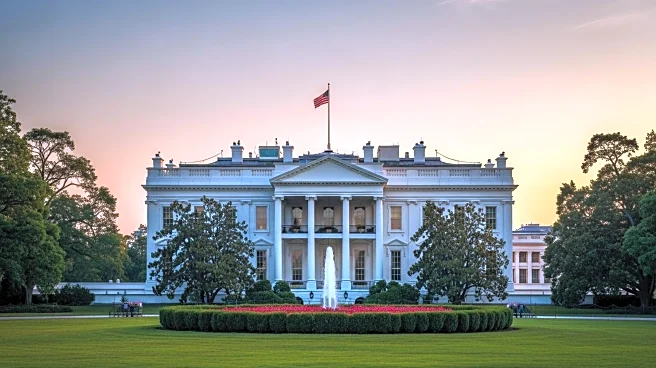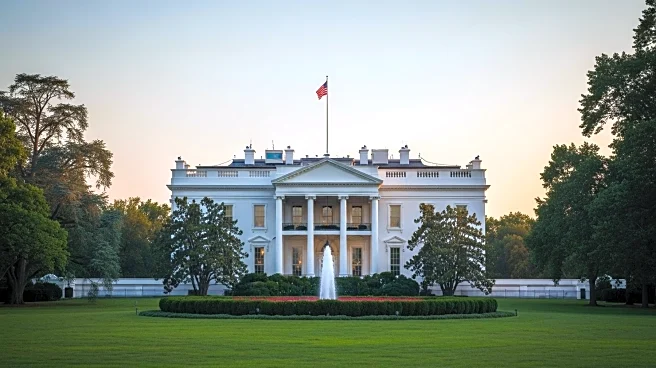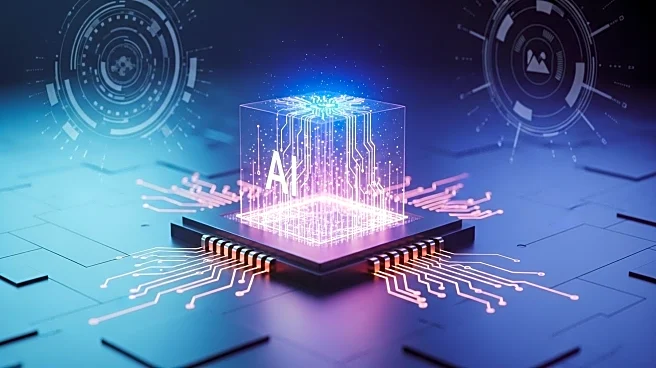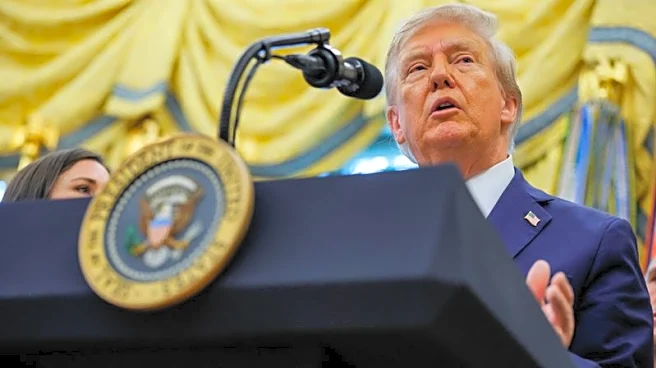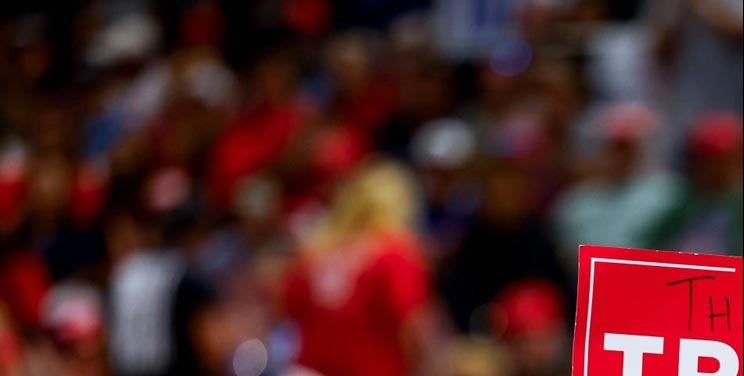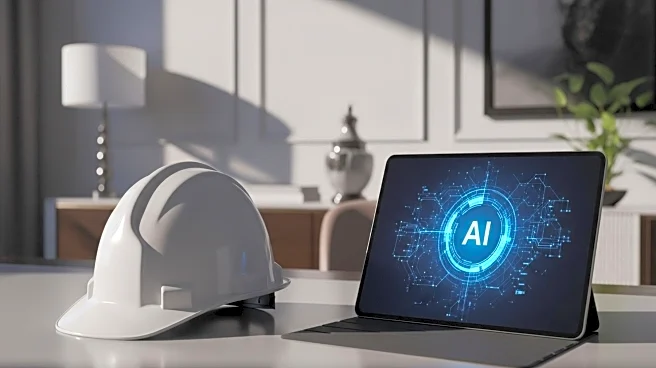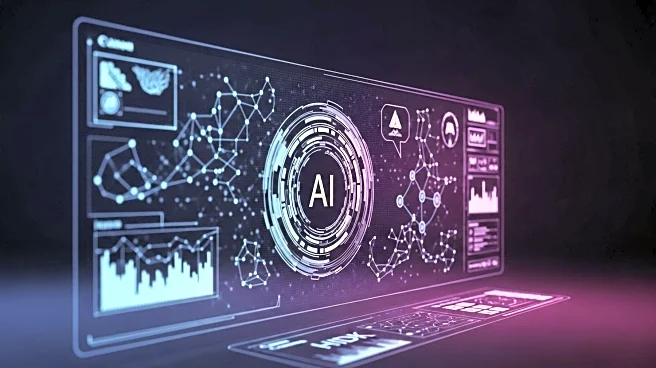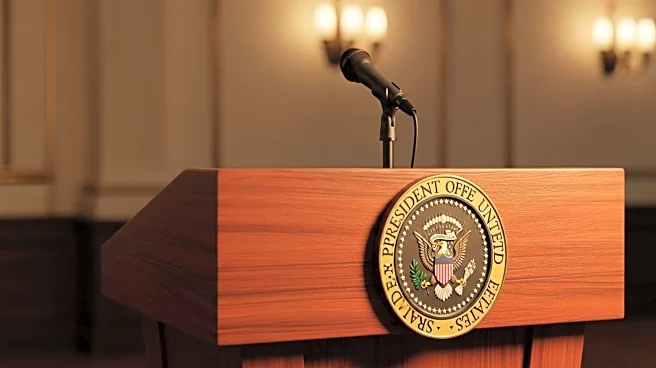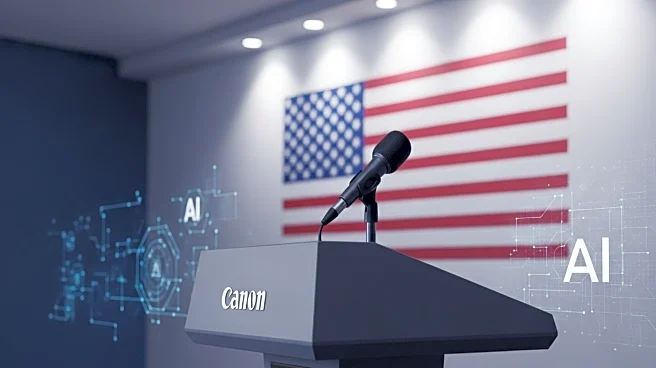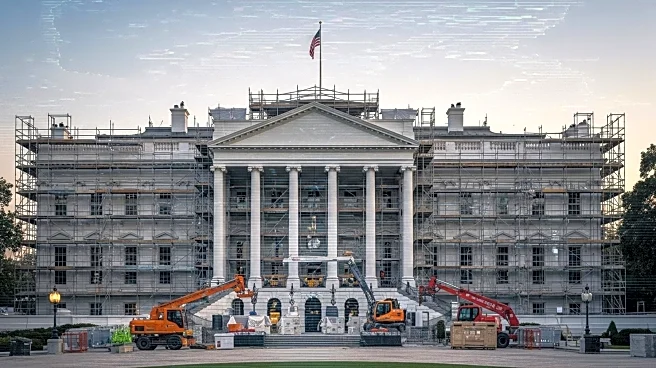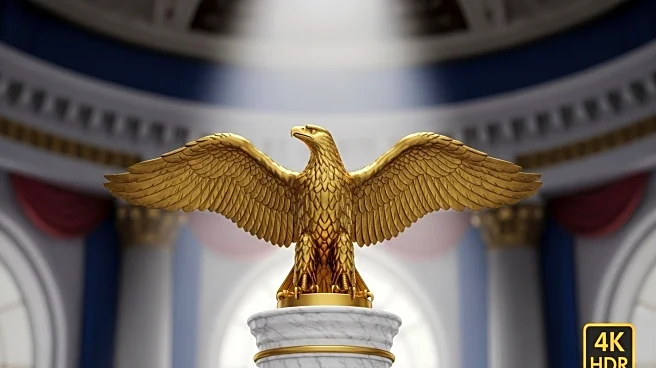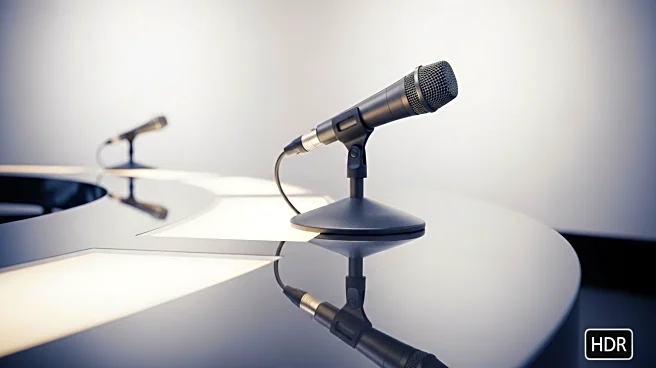What is the story about?
What's Happening?
President Trump has claimed that a video showing items being thrown from a White House window was created using artificial intelligence. This statement comes despite earlier indications from the White House that the video was real, involving a contractor performing maintenance. The video, which shows a black bag and a white item being tossed from a window, has sparked debate over the authenticity and implications of AI-generated content. Trump, known for his expertise in building design, argued that the windows are sealed and heavy, making the video unlikely to be real.
Why It's Important?
The incident underscores the challenges posed by AI technology in verifying the authenticity of digital content. As AI becomes more sophisticated, the potential for creating realistic fake videos increases, raising concerns about misinformation and its impact on public trust. The discrepancy between Trump's statements and the White House's confirmation highlights the complexities of managing AI-related issues in political contexts. This situation may influence public policy discussions on the regulation and detection of AI-generated media.
What's Next?
The White House has not responded to inquiries about the video, leaving the public with unanswered questions. As AI technology continues to advance, there may be increased demand for regulatory measures to address the creation and dissemination of deepfakes. Political leaders and tech companies may need to collaborate on developing solutions to ensure the integrity of digital content.
Beyond the Headlines
The ethical considerations of AI-generated media are significant, prompting discussions on privacy, consent, and the potential for misuse. The incident may lead to broader conversations about the legal frameworks necessary to address the challenges posed by AI in media and communication. Society's perception of digital content could shift as deepfakes become more prevalent.
AI Generated Content
Do you find this article useful?
